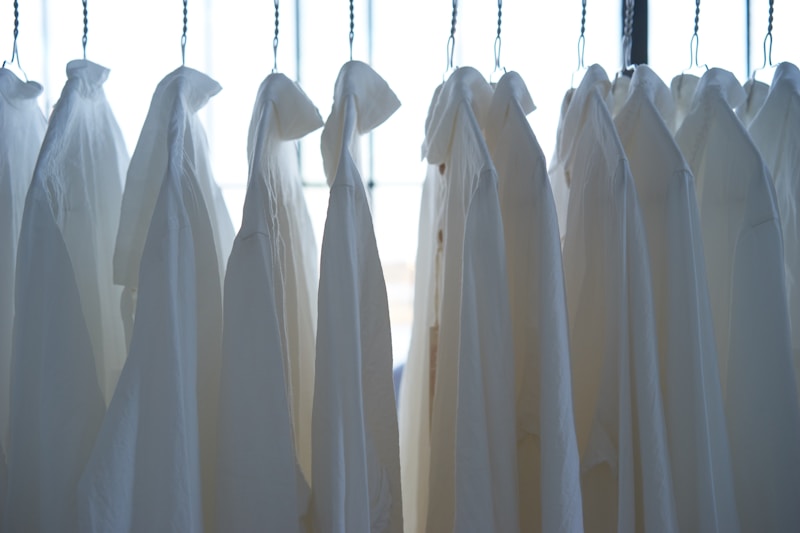The Role of Fabric in Bridal Fashion Evolution: A Journey Through Time
The Role of Fabric in Bridal Fashion Evolution: A Journey Through Time
Introduction
The world of bridal fashion is a captivating arena that has evolved dramatically over the years. A significant factor contributing to this evolution is the choice of fabric. Fabrics not only influence the aesthetics of bridal gowns but also impact the comfort and overall experience of the bride on her special day. In this article, we will explore the pivotal role that fabric has played in the evolution of bridal fashion, examining historical trends, modern innovations, and future possibilities.
The Historical Perspective on Bridal Fabrics
Bridal fashion has a rich history that reflects cultural shifts and societal values. In ancient times, the choice of fabric was often reserved for the affluent, with silk and satin being primary choices for royal weddings. As we move through the centuries, we notice significant changes in the preferred materials.
| Era | Common Fabrics | Characteristics |
| Middle Ages | Satin, Velvet | Luxury and opulence, with rich colors and heavy draping |
| Renaissance | Silk, Brocade | Intricate patterns and embroidery, highlighting wealth |
| Victorian Era | Lace, Taffeta | Romantic styles with elaborate details and modest cuts |
| Modern Era | Chiffon, Organza | Lightweight and airy, suitable for relaxed and outdoor weddings |
Modern Innovations in Bridal Fabrics
As we stepped into the 20th century, the bridal industry began to embrace a variety of fabrics that offered brides more options. The invention of synthetic fabrics revolutionized the bridal gown market. Nylon, polyester, and blends allowed for dresses that were both affordable and beautiful, making bridal fashion accessible to a broader audience.
Eco-Friendly Fabrics
In recent years, sustainability has become a crucial consideration in bridal fashion. Designers are increasingly opting for eco-friendly materials. Fabrics such as organic cotton, recycled polyester, and hemp have surfaced as popular alternatives. Brides are now able to wear gowns that not only look stunning but also align with their values regarding environmental responsibility.

The Influence of Cultural Trends on Fabric Choices
Cultural influences have also shaped the fabrics used in bridal fashion. For instance, Asian bridal wear often features intricate silk and brocade fabrics, adorned with ornate embroidery. In contrast, Western bridal fashion has seen trends ranging from minimalist designs with plain fabrics to lavish ball gowns with layers of tulle and lace.
Regional Variations
Bridal fashion varies significantly around the globe. In India, brides traditionally wear heavy silk saris or lehengas, adorned with stunning embroidery and embellishments. In contrast, Western brides may prefer lighter fabrics like chiffon and lace. Understanding cultural history and regional practices can help brides choose fabrics that reflect their heritage or personal style.
Current Trends in Bridal Fabrics
As fashion continues to evolve, so do the trends in bridal fabrics. Recent runway shows have emphasized a return to vintage styles with a modern twist. Fabrics such as lace, silk, and tulle are being layered creatively, allowing for whimsical and romantic styles that appeal to new generations of brides.
Custom Fabric Choices
Today, many designers offer custom fabric selections, allowing brides to create their unique vision. Tailoring fabrics to personal preferences can include selecting the texture, color, and pattern. This personalization taps into the desire for individuality and makes the bridal experience even more special.
The Emotional Connection to Fabric
Fabrics hold a profound emotional significance for brides. The feel of fabric against the skin can evoke feelings of nostalgia, comfort, and love. Many brides choose fabrics that hold personal meaning, whether it’s a family heirloom lace or a color that represents their love story. Understanding the emotional connection to fabrics can enrich the bridal fashion experience.
Considerations When Choosing Fabrics
When selecting the right fabric for a bridal gown, several factors must be considered:
- Comfort: Ensure the fabric feels good against the skin, especially for all-day wear.
- Weather: Consider the season and location of the wedding. Lightweight fabrics like chiffon may be ideal for summer, while heavier fabrics like satin suit winter.
- Style: The fabric can dramatically affect the style of the gown. Flowing fabrics create different silhouettes compared to structured materials.
Future of Bridal Fabrics
As we look to the future, the world of bridal fashion continues to adapt. Advances in technology may lead to the development of innovative fabrics that are not only beautiful but also functional. Imagine gowns that respond to temperature changes or fabrics that are stain-resistant—these advancements could redefine what brides expect from their wedding attire.
Conclusion
In summary, the role of fabric in bridal fashion evolution has been monumental. From historical choices tomodern innovations, fabric continues to define bridal identity, style, and comfort. As trends shift and new options emerge, brides have the opportunity to express their individuality through fabric selection. When choosing a bridal gown, consider the emotional connection, the cultural significance, and of course, your personal style. Remember that your wedding day is a celebration of love and individuality, and your choice of fabric plays a crucial role in that narrative.
As brides embark on this magical journey, they must keep in mind that the perfect fabric is not just about aesthetics; it’s about creating memories that will last a lifetime. Consider exploring different fabrics, understanding their history, and envisioning how they’ll play a role in your unique love story.
